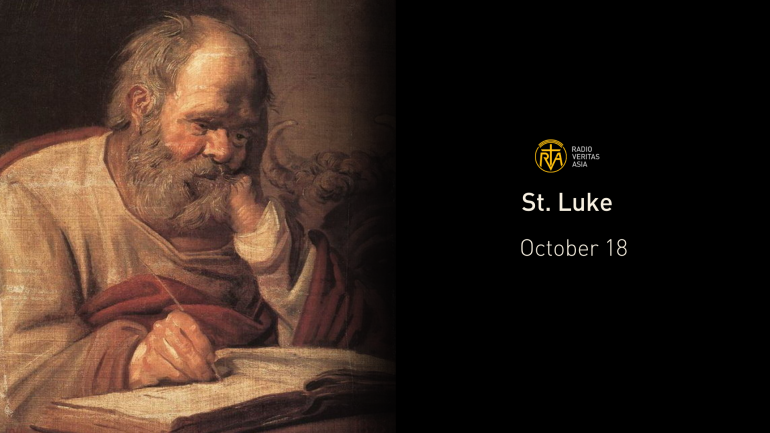St. Luke: The evangelist who put women in the Gospel spotlight

Out of the four evangelists, it was Saint Luke who preserved the most extensive biography of Jesus Christ, whose feast we celebrate on October 18.
His writings were unique not just because of the vocabulary that identified him as an educated man, but also because he gave special importance to the Blessed Virgin Mary and the women who accompanied Jesus.
Coming from the large metropolitan city of Antioch, now part of modern-day Turkey, St. Luke was trained as a physician. Believed to be a Gentile convert, he was educated among the most cultured and cosmopolitan members of the early Church.
According to tradition, he became a direct disciple of Jesus before his ascension, probably one of the 72 disciples.
Luke’s gospel is the only one in the Bible that tells the Christmas narrative, highlighting the Virgin Mary’s role in the history of salvation. He was the only one who wrote about the Annunciation, Mary’s visitation to Elizabeth, the Magnificat, the presentation of Jesus in the Temple, and the loss and finding of the Lord in the Temple.
He was also the only evangelist to mention the women followers of Jesus, mainly Mary Magdalene, Susanna, Martha, Mary, Joanna, and “many other women who used their own resources to help Jesus and His disciples.” (Luke 8:1).
Tradition also credits Luke as the first person who painted icons of the Blessed Virgin Mary, making him not just the patron saint of doctors and surgeons but also of artists and painters.
One of the portraits attributed to him, the “Salvation of the Roman People,” is enthroned to this day in the Basilica of Saint Mary Major in Rome.
Moreover, one of the major themes of Luke’s gospel is dedicated to the evangelization of the Gentiles, further supporting the belief that he is a Gentile convert. Among the evangelists, he was the one who wrote about Jesus praising the faith of the Gentiles through the widow of Zarephath and Naaman the Syrian (Luke 4:25–27).
In 51, Luke was believed to have joined Saint Paul in his travels from Macedonia to Philippi. He served as Paul’s personal physician as well as his biographer. This was evident in the narratives in the Acts of the Apostles, a book commonly attributed to Luke, and the several mentions of him in Paul’s epistles.
After Paul’s martyrdom in Rome in 67, Luke was believed to have preached throughout the Mediterranean. It was unclear how he died, with some accounts saying he was also martyred while others say he lived until 84 years old after settling in Greece.
Despite the unclear parts of his history, Biblical experts and theologians agree that Luke was one of the top historians of his time, as seen in his outstanding Greek prose style and technical accuracy in writing about the lives of Christ and the apostles.
The Church will always revere him as the holy man who contributed more to the New Testament than any other single author, the creator of Christian iconography, a disciple with a medical degree, and a holy man who elevated women in the Bible.
Radio Veritas Asia (RVA), a media platform of the Catholic Church, aims to share Christ. RVA started in 1969 as a continental Catholic radio station to serve Asian countries in their respective local language, thus earning the tag “the Voice of Asian Christianity.” Responding to the emerging context, RVA embraced media platforms to connect with the global Asian audience via its 21 language websites and various social media platforms.












